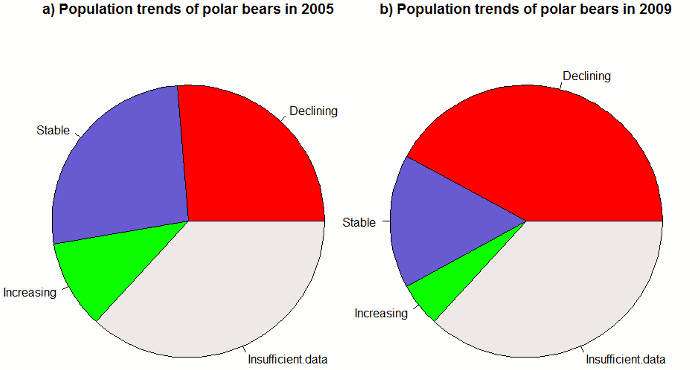The Effects of Global Warming on Polar Bears

Polar bear numbers are expanding
The Effects of Global Warming on Polar Bears has been quite significant. “A main Canadian power on polar bears, Mitch Taylor, said: ‘We’re seeing an increment in bears that is truly phenomenal, and in spots where we’re seeing an abatement in the populace it’s from chasing, not from environmental change.'” (Scotsman.com)
Polar bears are found in the Arctic circle and encompassing area masses. There are 19 perceived sub-populations, and appraisals put their numbers at around 20,000 to 25,000. Polar bears are classed as powerless by the World Conservation Union (IUCN) and recorded as a debilitated animal types under the US Endangered Species Act. Yet some claim that polar bear numbers have expanded subsequent to the 1950s and are presently steady. So what is the circumstance for this species?
Most importantly, a couple focuses should be made about polar bear numbers:
No one truly knows what number of bears there were in the 1950s and 1960s. Gauges then were in view of narrative proof gave by seekers or voyagers and not by logical reviews.
Polar bears are influenced by a few variables, including chasing, contamination and oil extraction. Most strikingly, chasing, especially taking after the presentation of snowmobiles, planes and ice breakers, prompted an enormous decrease in specific sub-populations. The presentation of the International Agreement on the Conservation of Polar Bears in 1973, which confined or even banned chasing in a few circumstances, therefore brought about an increment in polar bear numbers.
Not all sub-populations are influenced to the same degree by environmental change, keeping in mind a few sub-populations are all around mulled over, for others there is deficient information to put forth wide expressions about present and past numbers.
Because of this admonition, what do the figures really say when it comes to the effects of global warming on polar bears? As per a 2009 report by the IUCN Polar Bear Specialist Group, of the 19 perceived sub-populations of polar bears, 8 are in decrease, 1 is expanding, 3 are steady and 7 don’t have enough information to make any inferences. Figure 1 underneath thinks about the information for 2005 and 2009.

Figure 1: Sub-population status of polar bears for 2005 and 2009.
Both natural surroundings debasement and over-gathering are in charge of the decrease in a few sub-populations. To comprehend why the IUCN and US Endangered Species Act consider polar bears to be at danger due to the effects of global warming on polar bears, it is essential to take a gander at how rising temperatures are prone to influence their living space later on. Polar bears are exceptionally particular well evolved creatures which depend intensely on ocean ice for nourishment and different parts of their life cycle. Satellite information demonstrate that Arctic ocean ice has been diminishing for as long as 30 years, and projections demonstrate that this pattern will proceed as temperatures portable rising. The adjustments in ocean ice influence polar bears in a few ways:
The early withdraw of summer ocean ice implies that bears have less time to chase and in this way less time to develop fat stores.
The discontinuity and diminishment in ocean ice has a few effects. It constrains the bears to swim longer separations, spending some of their fat stores. It additionally decreases the quantity of seals, which are the bears’ primary wellspring of nourishment, and hinders voyaging and cave making. What’s more, it likewise drives the bears to invest more energy in area, with expanded communications with people conceivably prompting higher mortality.
To get a thought of the future potential of the effects of global warming on polar bears, we can take a gander at sub-populations found at the bears’ southern extent, where living space changes have been most recognizable in this way. A decent illustration is the western Hudson Bay sub-population, which is one of the best concentrated on. Here, ice floe separation is occurring sooner than 30 years back, successfully decreasing the encouraging period by around three weeks. Thus, the normal weight of female polar bears has dropped by around 21% somewhere around 1980 and 2004, and the populace declined by 22% somewhere around 1987 and 2004. In Alaska, there is proof of expanded fledgling mortality brought on by a decrease in ocean ice.
All in all, the reason polar bears have been classed as undermined originates from the effects of future environmental change on the bears’ natural surroundings. Current investigation of sub-populations where information is adequate obviously demonstrates that those sub-populations are for the most part in decay. Further territory corruption will build the dangers to polar bears.

 Print
Print